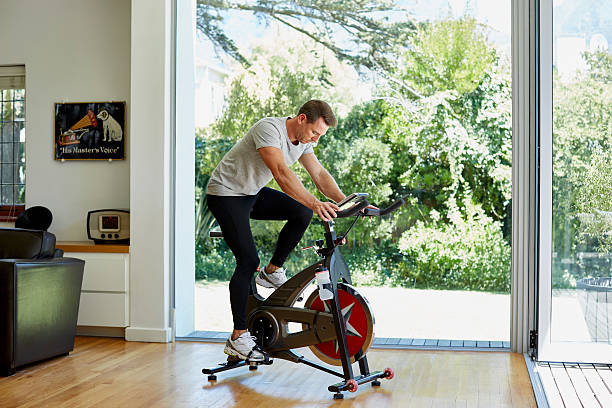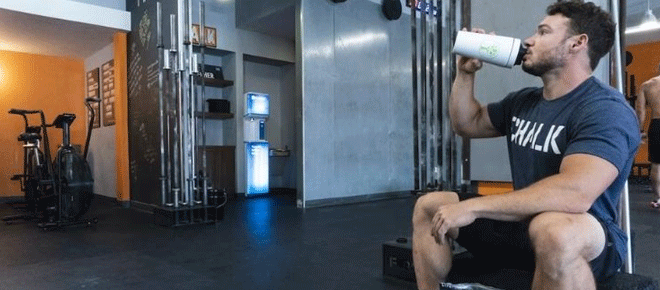Fitness

Skipping rope,
Skipping rope, also known as jump rope, is a popular physical activity and a form of exercise that involves jumping over a rope that is swung over the head and under the feet. It is a simple yet effective way to improve cardiovascular fitness, coordination, and endurance. Skipping rope can be enjoyed by people of all ages and fitness levels and can be performed individually or in groups.
Here are some key aspects of skipping rope:

-
History: Skipping rope has a long history, dating back to ancient civilizations. It was commonly used as a game by children, and it gradually evolved into a recognized form of exercise and sport.
-
Equipment: The primary equipment needed for skipping rope is a sturdy, well-sized rope. The rope should be long enough to reach the armpits when its ends are held up, and it can be adjusted to suit the height of the person using it. There are different types of ropes available, such as those made of leather, nylon, or plastic.
-
Techniques and Variations: Skipping rope involves a variety of techniques and variations. The basic technique involves jumping with both feet together, allowing the rope to pass beneath the feet and over the head. As skills progress, individuals can incorporate more advanced techniques like alternate-foot jumping, crossover jumps, double unders (two rotations of the rope per jump), and even complex routines involving tricks and flips.
-
Health and Fitness Benefits: Skipping rope offers numerous health and fitness benefits. It is an excellent cardiovascular exercise that increases heart rate and improves overall endurance. Regular skipping can help burn calories, enhance agility, coordination, and balance. It also strengthens the muscles in the legs, core, and upper body. Due to its intensity, skipping rope is an efficient workout that can be done in a short amount of time.
-
Skill Development: Mastering the art of skipping rope requires practice and coordination. It challenges motor skills, timing, and rhythm, making it a fun and engaging activity. With consistent practice, individuals can improve their timing, speed, and endurance.
-
Sports and Competitions: Skipping rope has evolved into a competitive sport, with various organizations and events dedicated to jump rope competitions. These competitions showcase the skills of participants in various categories such as speed, freestyle routines, and team events. Skipping rope has also been incorporated into other sports and fitness disciplines, such as boxing, CrossFit, and fitness training.
-
Safety Considerations: While skipping rope is generally a safe activity, it is important to take some safety precautions. Ensure that you have enough space to jump without hitting any objects or people. Wear appropriate footwear with good cushioning and support to minimize the impact on your joints. Start with a warm-up and gradually increase the intensity and duration of your skipping sessions. If you have any underlying health conditions or concerns, consult with a healthcare professional before starting a new exercise routine.
Skipping rope is a versatile and enjoyable activity that offers numerous health benefits. Whether you're looking to improve your fitness, have fun, or challenge yourself with advanced techniques, skipping rope can be a rewarding exercise option.
Exercise bike,
An exercise bike, also known as a stationary bike or a fitness bike, is a piece of exercise equipment designed to simulate the experience of cycling outdoors while staying in one place. It provides a convenient and effective way to get cardiovascular exercise and improve overall fitness.

Exercise bikes typically consist of a saddle, handlebars, pedals, and a flywheel mechanism. The flywheel creates resistance, which can be adjusted to increase or decrease the intensity of the workout. Some exercise bikes also feature additional features such as digital displays, heart rate monitors, and built-in workout programs.
Here are some key features and benefits of using an exercise bike:
-
Cardiovascular fitness: Cycling on an exercise bike is an excellent way to increase your heart rate and improve cardiovascular endurance. Regular use of an exercise bike can strengthen your heart, improve lung capacity, and boost overall cardiovascular health.
-
Low-impact exercise: Unlike activities such as running or jumping, using an exercise bike puts minimal stress on your joints, making it a suitable option for people with joint issues or those recovering from injuries.
-
Lower body workout: Pedaling on an exercise bike primarily targets the muscles of your lower body, including the quadriceps, hamstrings, calves, and glutes. By adjusting the resistance level, you can challenge and tone these muscles effectively.
-
Convenience and accessibility: Exercise bikes offer the advantage of being available for use at any time within the comfort of your home or gym. They are not dependent on weather conditions or outdoor terrain, allowing you to exercise regardless of the time or season.
-
Weight management and calorie burning: Regular sessions on an exercise bike can help you burn calories and contribute to weight loss or weight management goals. The number of calories burned depends on factors such as intensity, duration, and individual body composition.
-
Joint-friendly and injury prevention: Due to its low-impact nature, an exercise bike is a safer option for individuals with joint problems or those recovering from injuries. It allows you to engage in aerobic exercise without placing excessive stress on your joints.
-
Customizable workouts: Many exercise bikes offer adjustable resistance levels, allowing you to tailor your workouts to your fitness level and goals. You can start with lower resistance and gradually increase it as your strength and endurance improve.
When using an exercise bike, it's important to maintain proper form and adjust the bike to fit your body correctly. This includes adjusting the seat height, handlebar position, and ensuring your posture is upright and relaxed.
Before starting any new exercise routine, it's recommended to consult with a healthcare professional, especially if you have any underlying health conditions or concerns.
Overall, an exercise bike provides a convenient and effective way to incorporate cardiovascular exercise into your fitness routine. Whether you're looking to improve your overall fitness, lose weight, or strengthen your lower body, an exercise bike can be a valuable addition to your workout regimen.
Resistance band,
Resistance bands are versatile and portable exercise tools that provide resistance during workouts. They are made of strong, elastic material, typically latex or rubber, and come in various shapes, sizes, and levels of resistance. Resistance bands are used for strength training, flexibility exercises, and rehabilitation purposes.
Here are some key features and benefits of resistance bands:

-
Versatility: Resistance bands offer a wide range of exercises targeting different muscle groups. They can be used for upper body, lower body, and core workouts. You can perform various exercises such as bicep curls, squats, shoulder presses, chest presses, lateral walks, and more.
-
Adjustable Resistance: Resistance bands are available in different levels of resistance, typically color-coded to indicate the intensity. This allows users of all fitness levels to find a band that suits their strength and gradually increase the resistance as they progress.
-
Portability: One of the greatest advantages of resistance bands is their portability. They are lightweight, compact, and easy to carry, making them ideal for travel, home workouts, or exercising on the go. You can easily pack them in your bag and use them anywhere.
-
Joint-Friendly: Unlike free weights or machines, resistance bands provide a more gentle and joint-friendly form of resistance. They offer a smooth, controlled range of motion, reducing the stress on your joints and minimizing the risk of injury.
-
Rehabilitation and Injury Prevention: Resistance bands are commonly used in physical therapy and rehabilitation programs. They help to strengthen muscles, improve flexibility, and aid in injury recovery. They are particularly useful for rehabilitating the shoulders, knees, and hips.
-
Muscle Activation and Toning: Resistance bands activate the stabilizer muscles that are often neglected in traditional weightlifting exercises. They help to engage multiple muscle groups simultaneously, leading to improved muscle tone, strength, and endurance.
-
Cost-Effective: Resistance bands are relatively inexpensive compared to other fitness equipment, such as weights or machines. They provide a cost-effective way to incorporate resistance training into your fitness routine without breaking the bank.
When using resistance bands, it's important to choose the appropriate resistance level, maintain proper form and technique, and gradually progress as your strength improves. Following a structured workout routine or seeking guidance from a fitness professional can help you maximize the benefits of using resistance bands.








